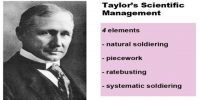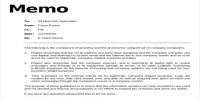Strategic evaluation and control can be defined as the process of determining the effectiveness of a given strategy in achieving the organizational objectives and taking corrective action wherever required. Actually, it is a system of monitoring, supervision, and follow-up. It is a way to manage the execution of your strategic plan. As a management process, it’s unique in that it’s built to handle unknowns and ambiguity as it tracks a strategy’s implementation and subsequent results.
The purpose of strategic control is to identify whether the organization should continue with its present strategy or modify it is the light of changed circumstances. Control tools and techniques help managers pinpoint the organizational strengths and weaknesses on which useful control strategy must focus.
The tools and techniques of strategic control can be classified into the following two major groups:
A. Strategic momentum control; and B. Strategic leap control.
(A) Strategic momentum control: These techniques are aimed at assuring that the assumptions on whose basis strategies were formulated are still valid, and finding out what needs to be done in order to allow the organization to maintain its existing strategic momentum. It includes the following techniques:
- Responsibility control centers: In this technique, strategies are evaluated and controlled on the basis of revenue, expense, profit, and investment centers.
- The underlying success factors: On the basis of Key Success Factors (KSFs) of an organization, the strategists can continually evaluate and control the strategy.
- The generic strategic approach: This approach is based on the assumption that the strategies adopted by a firm similar to another firm are comparable.
(B) Strategic leap control: This control can assist organizations by helping to define the new strategic requirements and cope with emerging environmental. realities. It includes the following techniques:
- Strategic issue management: This technique is aimed at identifying one or more strategic issues and assessing their impact on the organization,
- Strategic field analysis: It is a way of examining the nature and extent of synergies that exist or are lacking between the components of an organization.
- System modeling: It is based on computer-based models that stimulate the essential features of the organization and its environment.
- Scenarios: Scenarios are perceptions about the likely environment a firm would face in the future.
So, these are the various tools and techniques used in strategic evaluation and control. The controlling function includes activities undertaken by managers to ensure that actual results conform to planned results.
There are four primary types of strategic control:
(a) Premise Control
Every organization creates a strategy based on certain assumptions or premises. The sooner you discover a false premise, the sooner you can adjust the aspects of your strategy that it affects.
(b) Implementation Control
It focuses on the incremental actions and phases of strategic implementation and monitors events and results as they unfold. There are two subcategories of implementation control:
- Monitoring Strategic Thrusts or Projects – This is the assessment of specific projects or thrusts that have been created to drive the larger strategy. This early feedback will help you decide whether to continue onward with the strategy as is or pause to make adjustments.
- Reviewing Milestones – During strategic planning, you likely identified important points in the implementation process. When these milestones are reached, your organization will reassess the strategy and its relevance.
(c) Special Alert Control
This is a reactive process, designed to execute a fast and thorough strategy assessment in the wake of an extreme event that impacts an organization. The event could be anything from a natural disaster or product recall to a competitor acquisition.
(d) Strategic Surveillance Control
Strategic surveillance is a broader information scan. Its purpose is to identify overlooked factors both inside and outside the company that might impact your strategy.
















